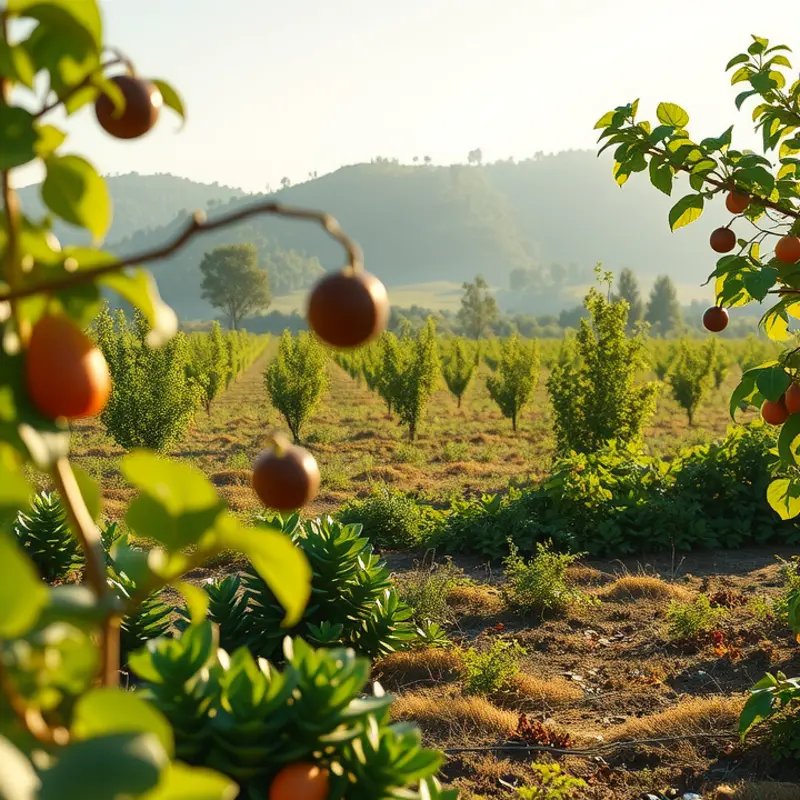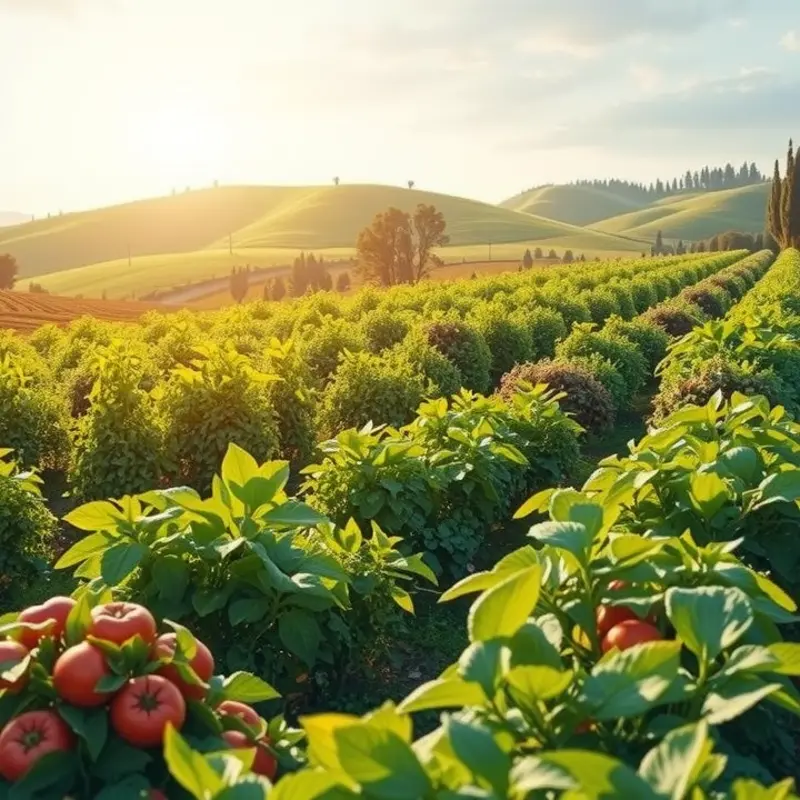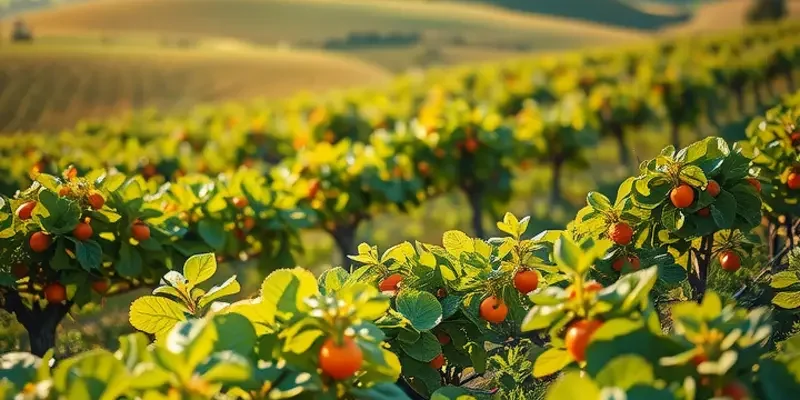As the shift towards plant-based eating continues to gain momentum, high-protein vegan diets are becoming increasingly popular. For those curious about how to meet their protein needs without consuming animal products, this dietary approach offers a balanced solution. By focusing on nutrient-dense plant foods, individuals can achieve optimal health while promoting sustainability and compassion for animals. This article delves into the protein-packed options available, the science behind protein requirements, and practical tips for incorporating these foods into your meals.
Understanding Plant-Based Protein Sources

Unlocking the potential of plant-based foods as protein sources requires understanding both variety and nutritional content. Many assume that animal products are the sole providers of complete proteins, yet nature offers rich alternatives within the plant kingdom. Grasping the diverse palette of vegan protein options expands both culinary creativity and nutritional adequacy.
Starting with legumes, lentils, chickpeas, and beans are staples. They provide not only protein but are rich in fiber, iron, and folate. A cup of cooked lentils contains nearly 18 grams of protein. Chickpeas, ubiquitous in various cuisines, offer around 15 grams per cup and can be enjoyed in salads, soups, or even roasted snacks.
Nuts and seeds are another powerhouse. Almonds, chia seeds, and hemp seeds deliver healthy fats and protein. Consider that two tablespoons of chia seeds provide approximately 4 grams of protein, while being rich in omega-3 fatty acids and antioxidants. Hemp seeds, containing all nine essential amino acids, are particularly noteworthy. A mere three tablespoons yield 10 grams of protein, serving as an ideal addition to smoothies or salads.
Whole grains play a significant role in a vegan protein diet. Quinoa stands out due to its complete protein profile with about 8 grams per cup cooked. Farro and barley, though not complete proteins, blend well with legumes to cover amino acid requirements. The concept of complementary proteins is key here: combining foods like rice and beans or whole grain breads with hummus ensures all essential amino acids are consumed.
Soy products, such as tofu, tempeh, and edamame, are established favorites. They are versatile, providing not only a substantial protein boost but also calcium and iron. Tofu offers about 10 grams of protein per half-cup serving. Tempeh, firm in texture, packs around 15 grams per half-cup and yields a nutty flavor ideal for stir-fries or sandwiches.
Understanding amino acids is crucial to achieving a balanced vegan diet. Proteins comprise 20 amino acids, nine of which are essential and must be obtained through diet. To ensure a complete profile, mix different plant-based sources throughout the day. Explore meal plans that emphasize variety and consider batch cooking to streamline preparation. Practical ingredient batching can simplify meal planning while ensuring diverse nutrient intake.
Successful vegan diets thrive on variety, pairing proteins with complementary nutritional profiles. As more individuals embrace plant-based eating, understanding these sources helps build meals that are both satisfying and nutritionally complete. With informed choices and strategic planning, a plant-based diet can fulfill all protein needs and support a vibrant lifestyle.
Building Balanced Meals on a Vegan Diet

Crafting a well-rounded vegan meal hinges on balance. Ensuring sufficient protein intake is essential, but so is including various other nutrients. Here’s how to master the art of creating satisfying, nutritious vegan meals.
Start by addressing protein. Legumes such as lentils, chickpeas, and beans are excellent sources. Incorporate them into soups, stews, or salads. Don’t forget tofu and tempeh, which are soy-based and offer high protein content. Quinoa, a versatile grain, doubles as a protein source, providing all nine essential amino acids.
While protein is crucial, rounding out your plate with fruits, vegetables, and grains is equally important. Aim for a variety: combine colorful veggies like leafy greens, bell peppers, and carrots to increase fiber and micronutrient intake. Whole grains such as brown rice, barley, and farro are not only filling but also provide important B-vitamins and minerals.
Creating synergy among different food sources can elevate your diet. Pairing beans with grains, for example, enhances protein absorption, creating a complete protein profile. This strategy, known as protein combining, was once recommended in every meal. However, current knowledge suggests it’s sufficient to balance these over the course of the day.
Mindful portion control is another component of balanced vegan meals. Use your plate as a guide: fill half with vegetables, a quarter with protein, and the remaining quarter with grains or starchy vegetables. This model aids in maintaining appropriate calorie and nutrient intake. Explore more minimal prep dinner ideas to keep your meal planning efficient.
Adopting varied flavors keeps meals exciting. Use herbs and spices to enhance taste without adding salt or calories. Ingredients like garlic, ginger, and fresh herbs offer robust flavors and potential anti-inflammatory benefits.
To demonstrate how delicious high-protein vegan meals can be, consider experimenting with a few recipes. Try a quinoa salad layered with black beans, corn, diced bell peppers, and avocado, topped with a lime-cilantro dressing. Or, a stir-fry with tofu, broccoli, carrots, and snap peas in a ginger-soy glaze over soba noodles.
Incorporate energy bars or smoothies packed with protein powder for on-the-go meals. A smoothie with spinach, almond milk, banana, and a scoop of vegan protein powder can be a powerful breakfast option.
Finally, remember that successful vegan meal planning means being prepared. Invest time in planning meals and prepping ingredients. Batch-cooking grains and beans or pre-chopping vegetables can make assembling meals throughout the week much more manageable.
Building balanced vegan meals isn’t just about replacing animal protein; it’s an opportunity to explore diverse ingredients and flavors. By focusing on variety, synergy, and mindful preparation, you can create nutrient-rich meals that satisfy both taste and nutritional needs.
Final words
High-protein vegan diets present an empowering way to fuel your body while adhering to a compassionate lifestyle. By embracing nutrient-rich plant foods, you can easily meet your protein requirements and enjoy a diverse range of flavors and dishes. From legumes and grains to nuts and seeds, the possibilities are endless. With this guide, you now have the tools to explore, experiment, and thrive on a high-protein vegan diet. Remember that balance is key—focus on variety and nutrient density to ensure you reap all the health benefits that come with a plant-based lifestyle.








